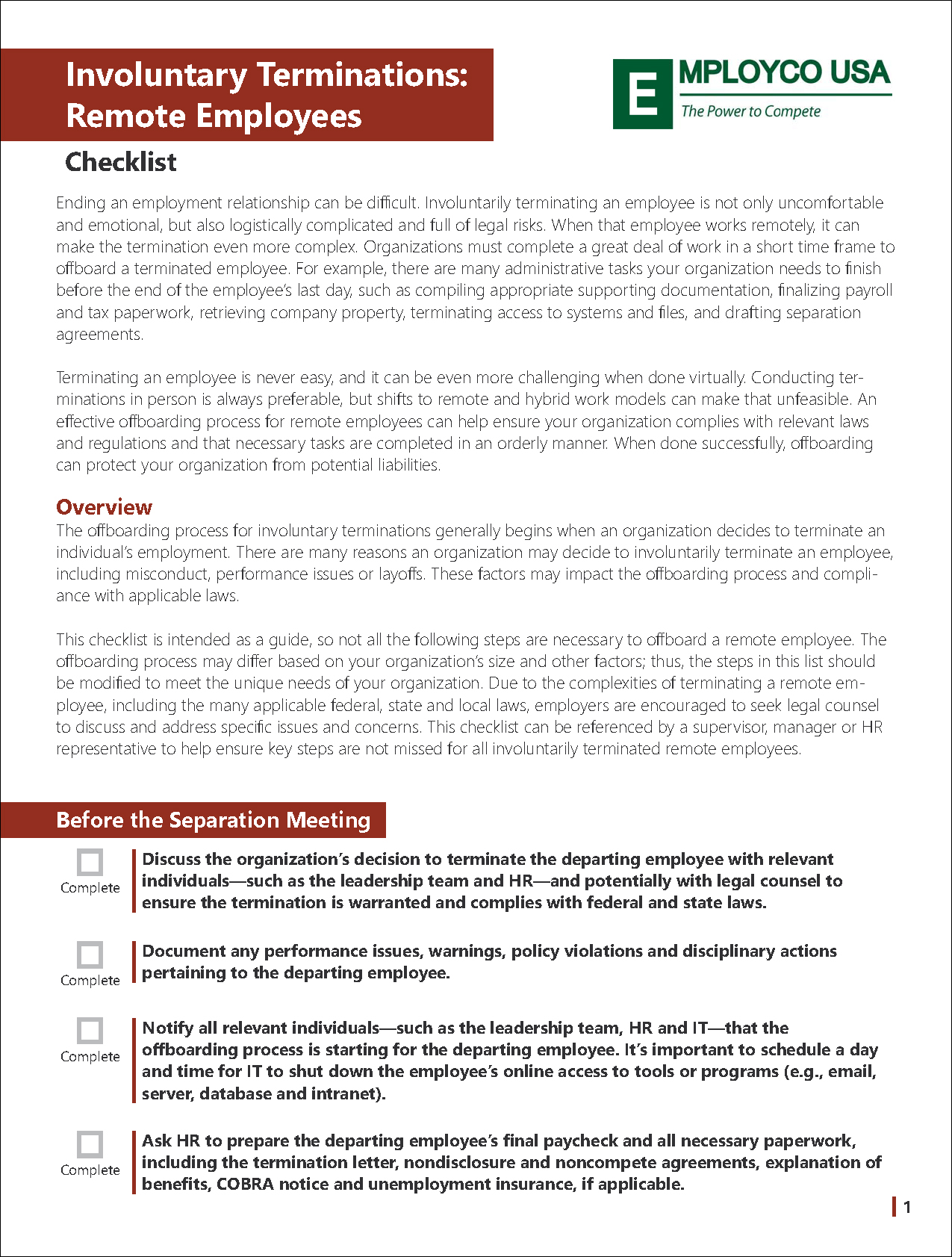
Ending an employment relationship can be difficult. Involuntarily terminating an employee is not only uncomfortable and emotional, but also logistically complicated and full of legal risks. When that employee works remotely, it can make the termination even more complex. Organizations must complete a great deal of work in a short time frame to offboard a terminated employee. For example, there are many administrative tasks your organization needs to finish before the end of the employee’s last day, such as compiling appropriate supporting documentation, finalizing payroll and tax paperwork, retrieving company property, terminating access to systems and files, and drafting separation agreements.
Terminating an employee is never easy, and it can be even more challenging when done virtually. Conducting terminations in person is always preferable, but shifts to remote and hybrid work models can make that unfeasible. An effective offboarding process for remote employees can help ensure your organization complies with relevant laws and regulations and that necessary tasks are completed in an orderly manner. When done successfully, offboarding can protect your organization from potential liabilities.
We have recently released a new document to help with this process. Click the following link to access our Involuntary Terminations – Remote Employees Checklist.
